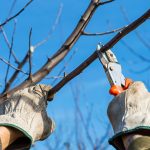Energy efficiency is a key concern for homeowners looking to reduce their utility bills and minimize their environmental impact. While many people focus on upgrading insulation or installing energy-efficient appliances, one of the most effective—and often overlooked—methods for improving energy efficiency is through strategic tree planting. Trees provide natural shade in the summer and act as windbreaks in the winter, which can significantly lower your heating and cooling costs. In this blog post, we’ll explore how you can use trees to boost your home’s energy efficiency, where to plant them for maximum impact, and the long-term benefits of this green investment.
The Role of Trees in Energy Efficiency
Cooling Your Home in Summer
During the hot summer months, the sun’s rays can heat up your home, forcing your air conditioning system to work harder and increasing your energy bills. Trees offer a natural solution by providing shade that reduces solar heat gain. Studies have shown that shaded areas can be up to 20-45°F cooler than unshaded areas, which translates to a significant reduction in the amount of energy needed to cool your home. By strategically planting trees around your property, you can reduce the temperature inside your home, making it more comfortable and energy-efficient.
Warming Your Home in Winter
In winter, trees can help you save on heating costs by acting as natural windbreaks. Cold winds can increase the rate at which your home loses heat, leading to higher heating bills. By planting trees on the north and northwest sides of your home, you can block these cold winds and reduce the wind chill around your house. This protective barrier helps your home retain heat, reducing the need for additional heating and lowering your overall energy consumption during the colder months.
Choosing the Right Trees for Energy Efficiency
Deciduous vs. Evergreen Trees
When selecting trees for energy efficiency, it’s important to consider the type of tree. Deciduous trees, which lose their leaves in the fall, are ideal for providing shade in the summer while allowing sunlight to warm your home in the winter. This seasonal adaptability makes them a great choice for maximizing energy efficiency throughout the year.
Evergreen trees, on the other hand, retain their foliage year-round, making them excellent windbreaks that can protect your home from harsh winter winds. They also provide privacy and can be used to block unwanted views or noise.
Native vs. Non-Native Species
Choosing native tree species offers several advantages, including better adaptation to the local climate, soil conditions, and resistance to pests and diseases. Native trees typically require less maintenance and are more likely to thrive in your landscape. However, if you have specific needs or aesthetic preferences, some non-native species may also be suitable, provided they are well-suited to your environment.
Strategic Tree Placement for Maximum Efficiency
Summer Shade
To maximize the cooling benefits of shade, plant deciduous trees on the south and west sides of your home. These locations are where your home receives the most intense afternoon sun, and shading these areas can significantly reduce heat gain. Additionally, consider planting trees near windows or over air conditioning units to keep these areas cool and reduce the strain on your cooling system.
Winter Windbreaks
For windbreaks, plant evergreen trees on the north and northwest sides of your home. These areas are most exposed to cold winter winds, and a dense row of evergreens can create an effective barrier that protects your home from chilling drafts. Ensure that the trees are planted at an appropriate distance from your home—typically 20 to 30 feet away—to provide adequate wind protection without interfering with the foundation or structures.
Additional Considerations
When planting trees, it’s important to consider their mature height and spread to avoid future issues with roots or branches encroaching on your home. Proper spacing is crucial to ensure that trees have enough room to grow without causing damage to your property. Consulting with a professional arborist can help you select the right tree species and placement for your specific needs.
Practical Tips for Planting and Maintaining Energy-Efficient Trees
Planting Techniques
To ensure the healthy growth of your trees, follow proper planting techniques. Dig a hole that is twice as wide as the tree’s root ball but no deeper than the root ball itself. Place the tree in the hole, making sure the top of the root ball is level with the ground. Fill the hole with soil, water thoroughly, and apply a layer of mulch around the base to retain moisture and regulate soil temperature.
Ongoing Maintenance
Regular maintenance is essential to keep your trees healthy and maximize their energy efficiency benefits. Prune trees annually to remove dead or diseased branches and to maintain their shape. Water young trees regularly until they are established, and fertilize as needed to promote healthy growth. Keep an eye on the trees’ overall health, watching for signs of pests or disease.
Avoiding Common Mistakes
One common mistake is planting trees too close to the house. While you want the benefits of shade or wind protection, planting too close can lead to issues with roots damaging foundations or branches scraping against walls and windows. Another mistake is underestimating the mature size of the tree, which can result in overcrowding or interference with power lines. Regular pruning and consultation with a professional arborist can help you avoid these issues.
The Long-Term Financial and Environmental Benefits
Reduced Utility Bills
Strategic tree planting can result in significant savings on your utility bills. By reducing your reliance on air conditioning in the summer and heating in the winter, you’ll lower your energy consumption and, consequently, your monthly bills. The long-term savings can be substantial, especially when you consider the lifespan of a tree and the cumulative impact of lower energy usage over the years.
Environmental Impact
Beyond the financial benefits, trees play a critical role in improving the environment. They absorb carbon dioxide, produce oxygen, and help reduce the urban heat island effect by cooling the air around them. By planting trees strategically, you’re not only improving your home’s energy efficiency but also contributing to a healthier environment.
Making the Right Choice for Your Home
Strategic tree planting is a simple yet powerful way to enhance your home’s energy efficiency while contributing to environmental sustainability. By carefully choosing the right trees and placing them in optimal locations, you can enjoy lower utility bills, a more comfortable living environment, and the satisfaction of knowing you’re making a positive impact on the planet. If you’re ready to take the next step in creating an energy-efficient landscape, contact VMG Tree Care today. Our expert arborists can help you select and plant the perfect trees for your property, ensuring long-term health and energy savings.



